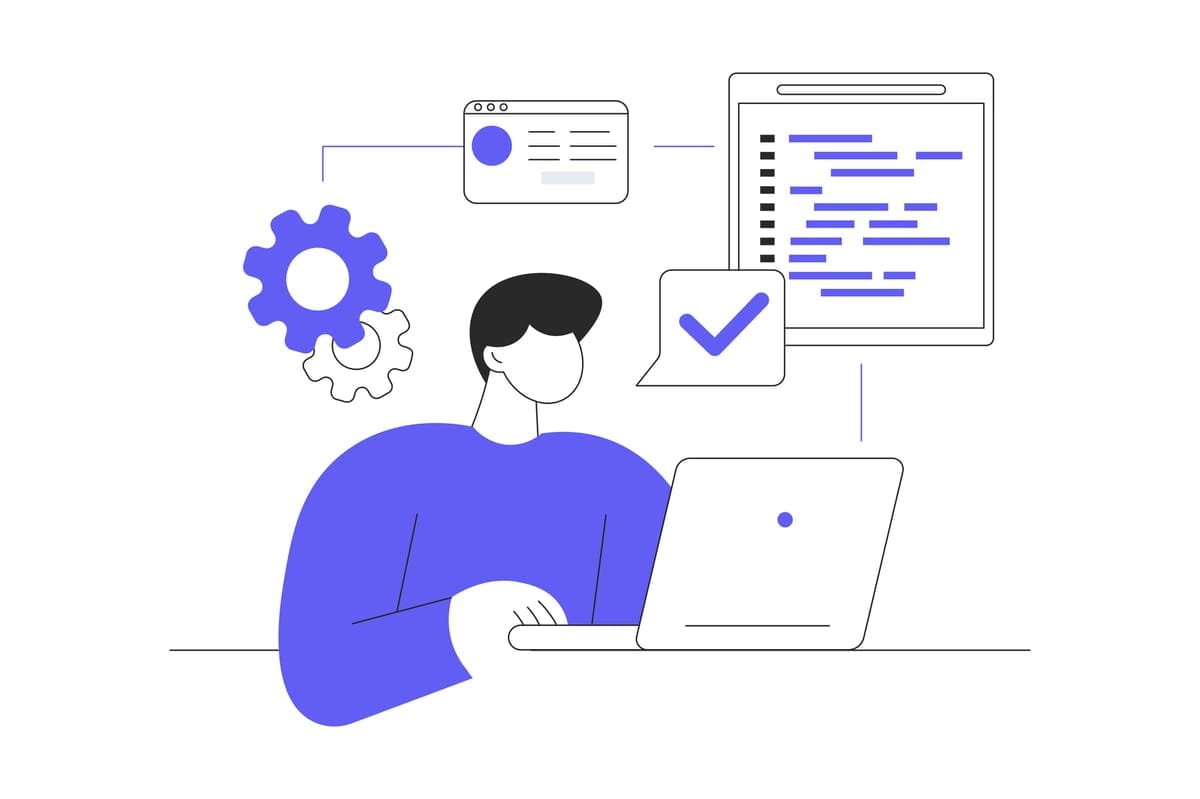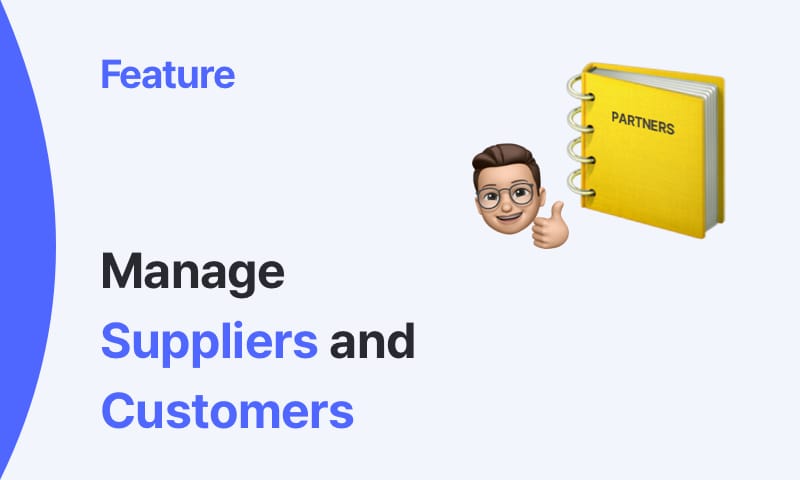How to Prevent Stockouts with Reorder Point Tracking and Forecasting

Any business can experience a stockout for various reasons.
That’s right: a sole proprietorship, mom-and-pop shop, or medium-sized corporation can face stockouts. These events are highly disruptive and can force a company to lose sales while frustrating and losing customers. To keep things running smoothly, many businesses rely on tools like reorder point tracking and inventory forecasting.
It should go without saying that these methods are most valuable when a business owner knows what they’re doing. If you don't know what you’re getting yourself into, then there’ll always be a chance your business will hit a stockout.
Reorder point tracking and forecasting help businesses stay prepared to meet customer demand without overstocking or overspending. In this guide, we’ll explore:
- The common causes of stockouts,
- The importance of reorder point tracking, and
- How forecasting techniques can help you stay ahead of inventory shortages.
What is a Stockout?
A stockout happens when a business runs out of inventory for a particular item. It can happen for a number of reasons: unexpected demand spikes caused by seasonal periods or popularity, supplier delays due to weather disruptions or market shortages, economic instabilities (like a recession), or simply poor inventory tracking.
It's arguably one of the most disruptive things a business can experience. It halts operations, causes revenue shortages, and leads to a loss of customer trust. As a business owner, you should be proactive in keeping track of your supplies and following market forecasts to determine when potential shortages can happen.
The Consequences of Stockouts
Stockouts can be a real bummer. They do more than just affect revenue–they can also damage business/customer relationships and operational efficiency. Let's examine these consequences in more detail:
- Lost sales and revenue: Customers will look elsewhere if they can’t get what they need from you. This leads to lost sales, and those customers may not come back.
- Decreased customer loyalty: Frequent stockouts can harm a company’s reputation and reduce customers’ trust.
- Operational disruptions: Instead of focusing on daily operations, your team has to shift gears to deal with emergency orders and supply gaps. This takes time and energy away from other important business tasks.
- Higher shipping costs: When you’re out of stock, you often have to pay extra to get products in faster and replenish inventory quickly. These costs can affect your budget, resulting in quarterly or biannual sales quota failures.
To prevent these problems, you’ll definitely need to adopt proactive inventory management strategies like reorder point tracking and forecasting. Let’s take a look at these below.
What is Reorder Point Tracking?
Benjamin Franklin once said, “If you fail to plan, you are planning to fail.”
This couldn’t be more appropriate for business. Staying ahead of the curve can help you prevent any hiccups, and reorder point tracking is one feature that you should know. This allows businesses to reorder stock before it runs out.
Let’s say your reorder point is 500 units.
As soon as your stock drops below that point, you should order a restock.
But the reorder point isn’t the same for every business. It depends on how fast your products sell, how long it takes to receive a new shipment, and how much extra stock you keep on hand–just in case. That’s why there’s a formula.
How to Calculate the Reorder Point
The formula for calculating the reorder point considers average demand, lead time, and safety stock, so note that the values may change throughout the year.
Let's break down the formula:
- Average Daily Usage - This is the number of units sold or used daily.
- Lead Time - The time it takes for an order to be delivered after placing it. Lead time doesn’t change often, but it sometimes can due to outside factors like weather disruptions.
- Safety Stock - Extra inventory kept on hand to cover unexpected demand spikes or supplier delays. Safety stock acts like a Plan B of sorts. If there’s a sudden increase in demand or a supplier delay, this extra inventory covers your demand until your restock arrives.
Here’s an example:
(20 × 4) + 80 = 160 units
So once you reach 160 units, it’s time to reorder to avoid a stockout.
Benefits of Reorder Point Tracking
Using reorder point tracking provides three main advantages:
▶︎ Preventing stockouts - We’ve mentioned this already, but it bears repeating as it’s perhaps the most substantial benefit of reorder point tracking. You don’t want to run out of something and keep customers waiting (or worse, lose them to someone else).
▶︎ Keeping inventory lean - Overstocking means higher carrying costs, which could lead to dead stock. It ties up both money and storage space that your business may be unable to afford.
▶︎ Improving order accuracy - With a clear order point, you can order the right amount of stock at the right time. Ultimately, you’ll be able to better forecast when a restock will be needed, ensuring that supplies don’t run out over time.
The Role of Inventory Forecasting in Stockout Prevention
If you’ve ever placed a reorder, only to realize it’s not enough, or that it arrives too late, you know how easily things can go wrong. Forecasting helps you anticipate future demand and stay one step ahead.
What is Inventory Forecasting?
Inventory forecasting is the process of estimating future inventory needs by analyzing past sales data, market trends, and seasonal demand patterns. It gives you a clearer picture of what to expect, so you can plan ahead more effectively and avoid last-minute stockouts.
Common Forecasting Methods
Different forecasting techniques can improve stock management, identify patterns, and predict future demand. Some of these techniques include:
- Moving Averages - This calculates the average number of units sold (market demand) over a set period to spot trends and smooth out short-term fluctuations.
- Exponential Smoothing - Similar to moving averages, but it gives more weight to recent sales. It’s useful when customer behavior is changing in the short term.
- Demand Sensing - This uses real-time sales data, customer orders, and market trends to adjust inventory levels immediately.

Machine Learning Forecasting
Some businesses take forecasting a step further using machine learning. Artificial intelligence (AI) models can be used in inventory forecasting to analyze large datasets and predict market demand more accurately based on three factors:
- Past sales trends
- Seasonal demands
- External factors like weather or economic conditions
How to Build a Stockout Prevention Strategy
Reorder point tracking helps you know when to restock. Forecasting helps you know how much to order. Together, they help you avoid running out of stock and keep enough inventory on hand. Here are six ways to combine these strategies effectively.
1. Monitor Your Inventory Levels in Real Time
Inventory management software like BoxHero can track stock levels automatically. For example, with BoxHero’s mobile app, you can track inventory from anywhere and get alerts when items reach their reorder point.
2. Regularly Update Your Reorder Points
Reorder points should be adjusted based on changes in demand, supplier lead times, and market conditions. You can do this by performing periodic reviews to ensure accuracy.
3. Incorporate Safety Stock
Safety stock acts as a buffer when things don’t go as planned, like sudden spikes in demand or shipping delays. You can calculate the safety stock based on demand variability and supplier reliability.
4. Use Demand Forecasting
Forecasting models should be used to better inform you so you can make better purchasing decisions to avoid under- or over-ordering. Be sure to review forecasts every month or quarter.
5. Work with Reliable Suppliers
Building strong supplier relationships can ensure timely deliveries. On top of that, it can reduce the risk of stockouts due to supply chain disruptions.

6. Analyze Stockout Trends
Look back at past stockouts to spot patterns. Were they tied to specific items, times of year, or suppliers? Use that insight to adjust your ordering strategy and avoid repeat mistakes.
Choosing the Right Tools for Inventory Management
Good inventory management starts with the right tools. If you’re trying to prevent stockouts and keep your business running smoothly, the software you choose matters. Here’s what to look for:
- Automated reorder alerts - As mentioned above, these notify you when stock hits your reorder point so you can restock before it runs out.
- Forecasting and analytics - Look for software that helps you spot trends, seasonal shifts, and predict demand. This way, you can anticipate ahead of time and order the right amount to keep it in stock.
- Supplier management - Tools that track lead times and past orders can give you a clearer picture of how reliable your suppliers are and help you prepare for potential delays in shipping times.
- Multi-location tracking - If you manage stock across multiple warehouses or locations, this feature helps you keep track of everything in sync. It saves time and reduces the risk of overordering.
Keep Stockouts from Hurting Your Business
Stockouts are expensive–but they’re avoidable. With the right tools and processes, your business can avoid these costly incidents and stay ahead of demand.
You can trust BoxHero to keep tabs on your items and set reorder points to manage your inventory in one place. It’s easy to use and you can try it free for 30 days–no strings attached!
Check it out today, or reach out to us at support@boxhero.io for any questions.




